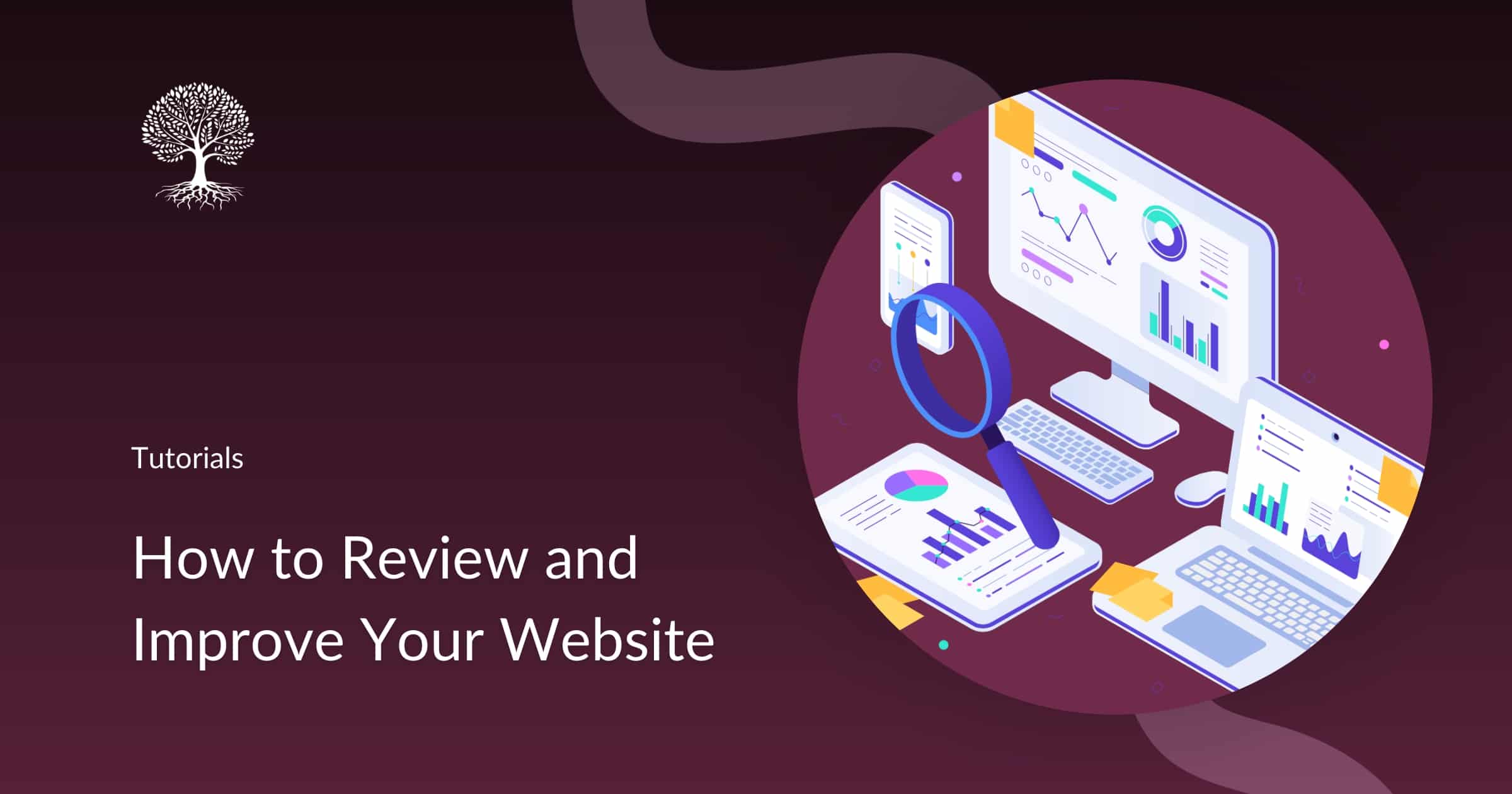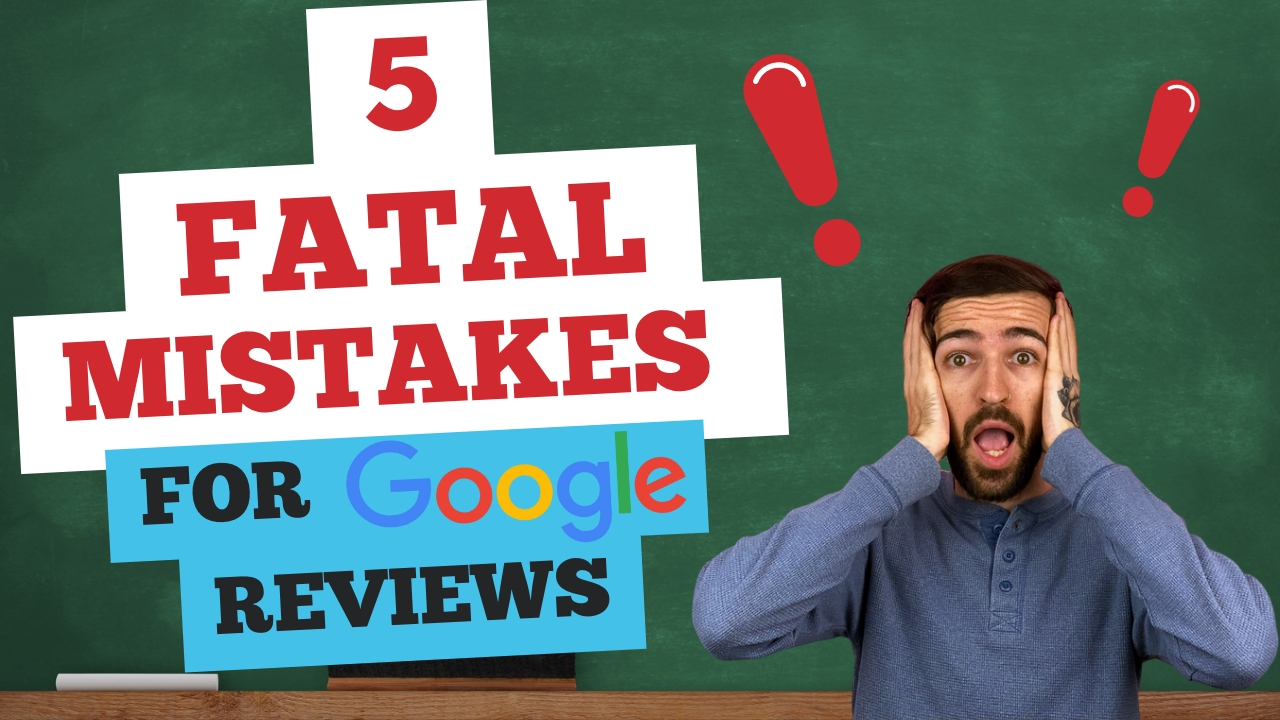Do you maintain your car’s health? What about your house? Yourself?
Now what about your website?
Your website is one of the most important sales tools you have. You deserve to have it running the right way.
Whether you’ve had your website reviewed in the past or not, use this guide as your go-to checklist on what to look for.
Author’s note: I speak from a WordPress background, so you’ll see WordPress-specific tips in this post, but these tips can be used on every website nevertheless.
What is a Website Review?
Essentially, it’s an in-depth look at each of the different aspects of your website. You might have heard one of its various names, such as ‘audit,’ ‘scan,’ or in our case, ‘review.’
Later in this post, we will discuss more about what the different types of reviews are and how you can do them.
Who Is a Website Review For?
If you’re curious about where your website might be falling behind, and what you can do about it, then it’s for you.
This sounds, like a cop-out answer, but the reality is there are plenty of websites that aren’t being used to their full potential.
It’s not uncommon to come across those who haven’t seen the entire benefit that a properly built website will provide.
When Should You Review Your Website?
Typically, you want to review the multiple aspects of your website every 3–6 months. This gives you enough cooking time for things like blog posts, SEO rankings, and conversion items like calls to action (CTAs).
If your website is built off WordPress like so many are (like this one), then during this time you’ll also see software updates.
These mostly come in the form of your theme and plugins. Occasionally, it might be from your web host regarding your server.
Why Should You Perform a Review of Your Website?
In the same way the gutters need cleaned and your oil needs checked, a website needs to be reviewed.
It doesn’t matter whether you call it a scan, audit, or review. It’s like a spa day for your site.
Except with fewer candles and more code.
Gutters cleaned ✅
Oil changed ✅
Website reviewed and improved ✅
What are the Different Types of Website Reviews?
There are plenty of different types of reviews you can do for your website. In this guide, we are going to focus on these 6 types below.
- Security
- Website Health
- Search Engine Optimization (SEO)
- Conversion Rate Optimization (CRO)
- Competitive
We’ll also discuss how to perform these reviews later in this post.
Note: There isn’t a set definition for each of these. Everyone has their own method, but ultimately, they all follow one simple goal: How can this website be improved?
1. Security Review
A security review will be focused on making sure your website is locked down and as hacker-proof as possible.
Disclaimer: Sometimes the bad guy wins, but hackers are also lazy. With best practices, most hackers won’t waste their time on your site. They rather easier targets or high-value targets (ahem, Sony).
2. Website Health Check
A Website Health Check is basically like the physical your doctor gives you.
Similar to the human body, we can think of these checks with internal and external testing.
Think about internal tests as something that can only be done while logged in to your website or hosting provider. Additionally, any paid 3rd-party software that privately connects to your website.
For external testing, I consider it to be something anyone can do by using free 3rd-party websites, or by navigating your website manually.
3. SEO Review
SEO stands for Search Engine Optimization, which is the practice of making Google happy. Remember, Google can’t read your website like a human can.
We have to give Google some help.
It tries to best match what someone is searching for, called keywords, with your content. And If the search engine decides your page is useful, you’ll start climbing the ranks.
I’ll be the first to admit, there are so many things driving SEO that it gets overwhelming very fast. But don’t stress, take it one step at a time.
There are three categories of SEO:
- On-page SEO
- Off-page SEO
- Technical SEO
Don’t stress, take it one step at a time.
1. On-page SEO
On-page SEO refers to the stuff you see on your webpage, like the writing and URL name.
It also includes things only Google sees, like meta titles and descriptions.
2. Off-page SEO
Off-page SEO involves tactics outside your website to make it more trustworthy and drive more traffic.
Usually, off-page SEO is anything you do off your website to bring traffic back to your website.
3. Technical SEO
Technical SEO includes things like page performance, XML sitemaps, and mobile friendliness.
This has some overlap with on-page SEO, but this is more behind the scenes than that.
4. Conversion Rate Optimization (CRO) Review
Reviewing your website’s conversion rate is all about turning your website traffic in to paying customers.
You’re analyzing the sales funnel to see where you can remove any friction to get your visitor to do what you want them to do. Whether that’s through a contact form, email marketing sign up, you name it.
You also want to look at the UX/UI of your website. This stands for User Experience and User Interaction.
Your website should be easy to navigate. It should also match your branding and convey a clear message.
These are all incredibly important factors for your CRO.
Online Traffic ➕ Effective Call-to-Action 🟰 More Conversions
👩💻👨💻➕🙋♂️🙋♀️🟰💰💰
5. Competitive Website Review
With a Competitive Website Review, you’re comparing your website to your competition’s website.
At first, you might think this is unethical, but that couldn’t be further from the truth.
Your business needs to be better than your competition in every way, and that includes your website.
Just glossing over your competitor’s website can give you new ideas. Doing a deep-dive can unlock all sorts of inspiration.
Steps to Perform Each Type of Review on Your Website

It might get a little more technical, but you’ve more than likely heard many of these terms before.
How to Perform a Security Review
These are some things you’re looking for:
Do you have an SSL certificate? (Is there a lock in your address bar?)
Here are a couple of scans to check:
Are users able to log in?
- What does your error message say when a failed login attempt happens?
- Are you limiting the amount of login attempts allowed?
Do you have the default WordPress login page enabled?
- example.com/wp-admin
- example.com/login
What user accounts are there?
- Is 2-Factor Authentication enabled?
- Are strong passwords enforced?
- What account types do you have? More importantly, who has admin access?
Can you ban visitors?
Do you have a Web Application Firewall (WAF)?
Can users upload files to your website?
- Are those files executable? (Aside from easy login credentials, this is probably the easiest way to hack a website)
It feels like there are infinite ways to prevent hackers from taking over your site. And to be honest, there is.
But even with the simplest of best practices, you can keep yourself safe pretty easily.
Let’s move on to the next type of website review you can and should do.
The 2 Types of Website Health Checks
Let’s look at your website’s overall health.
Internal Review Checklist
- What hosting provider do you use? (Some are vastly better than others)
- Are you using a CDN?
- Cloudflare
- KeyCDN
- StackPath
- SiteGround
- Is everything up to date, like your theme and plugins?
- What plugins are you using?
- Are there multiple plugins doing the same thing?
- Are there any plugins not being used that can be deleted?
- What theme are you using?
- Divi
- Elementor
- GeneratePress
- Do you have any unused themes that can also be deleted?
- Ex. default WordPress theme
- What are you using for backups on your website?
- UpdraftPlus
- BackupBuddy
- BlogVault
- Are you using any conversion tracking software?
- Mouseflow
- Hotjar
- What about maintenance-based plugins?
- WP Rollback
- WP Sweep
- Widget Disable
- What SEO plugin are you using?
- RankMath
- Yoast SEO
- SEOPress
- Are you using an image compression plugin?
- EWWW Image Optimizer
- Imagify
- TingPNG
- ShortPixel
- Do you have a security plugin?
- WordFence
- iThemes Security
- WP Activity Log
- What about performance plugins?
- WP Rocket
- WP Fastest Cache
- W3 Total Cache
- Asset CleanUp
- Perfmatters
- Autoptimize
External Review Checklist
Anyone can do this part to your website, regardless of user status or paid software. Typically, you just enter in your website name and pressing enter.
But you do have to understand how to read the data.
1. Speed Tests
- https://developers.google.com/speed/pagespeed/insights/
- https://gtmetrix.com/
- https://tools.pingdom.com/
- https://tools.keycdn.com/performance
2. Image Sizes
- You can do this easily from WordPress; but if you download any image from your website, you’ll see your file sizes. Smaller the better.
3. Policy pages
If you collect any Personal Identifiable Information (PII) on your website, then you may be required by law to have specific policies.
- Privacy Policy
- Cookie Policy
- Terms of Service
- Terms and Conditions
- End-User License Agreement (EULA)
How to Review Your SEO
So, how do you actually go over your website’s SEO?
First, you can start these SEO tools, but you can use whatever you prefer.
6 Different Tools You Can Use to Make SEO Reviews Easier
- Google Search Console (free)
- Google Keyword Planner (free)
- SEMrush (premium)
- Ahrefs Free SEO Tools (freemium)
- Moz Free SEO Tools (freemium)
- UberSuggest (freemium)
- Screamingfrog (freemium)
After you’ve got your tools ready to go, it’s time to dive into the three categories of SEO:
- On-page SEO
- Off-page SEO
- Technical SEO
Tips on Building Good On-Page SEO
First, and foremost, the most important tip for on-page SEO is making sure your content is incredible.
The common belief is that your content should be 10x better than anything else out there.
Put it this way: You will naturally use your keyword and variations of it throughout your writing. The more in-depth you get, the better.
In-depth writing is what keeps users on your page. And that is ultimately what Google looks for.
Utilizing Your Keywords
As a reminder, keywords are the search term someone types into Google to find your page.
You want to avoid stuffing this term throughout your page or blog post. Let flow naturally.
It will make its way out in your writing. And if it doesn’t, then that’s your sign you need to improve.
Making Your Page Scannable
We don’t read websites. We scan them.
It’s that psychology that you need to tap in to.
Here are some tips to improve your webpage’s scanability:
- Keep lines under 65 characters in length
- 2–3 sentences per paragraph
- Use lists to breakup large blocks of text
- Include relevant images or graphics
- Write headings that make sense
We don’t read websites. We scan them.
Video is a Game Changer
Adding video to your page or post is an incredible idea.
Picture this:
Don’t want to read the page? No problem, you can watch this video instead.
Oh, what’s that, Google, you love seeing our increased page time? Oh, wow, I wonder what could have helped 😏
If you add a 60-second video to your page, you’ll skyrocket your user engagement time.
The video you make today, can still generate you income years later.
5 Amazing Tips to Build Strong Off-Page SEO
In no particular order, we’re going to dive into these 5 tips to help strengthen your off-page SEO:
- Link Building
- Content Marketing
- Local SEO
- Reviews
- Events
1. Link building – What is it and what makes a link “good?”
When a website aside from your own links to one of your pages, this is called a backlink. The more backlinks from websites that already have a high domain authority, the better you’ll look for search engines.
Here are some tips to get more backlinks:
- Ask for them (blog posts makes this easier)
- Add them yourself on forums and social media (doesn’t do much, but a couple extra visitors never hurt)
- Earn them (again, blog posting makes this easier)
To add, when trying to build backlinks, you want to make sure they are good backlinks. See how to do that below:
1. Authority
In layman’s terms, this is the overall quality of the website that the link is coming from.
The New York Times has a much higher domain authority than I do. Therefore, a link from them carries more weight on the Internet.
2. Relevance
Your goal is to get links from websites that are similar to yours in industry. A home inspector’s website shouldn’t be getting backlinks from a pet store.
3. Placement
You want your link to be in the main body of the webpage. This way, plenty of people see it. You don’t want your link thrown in the footer or sidebar to collect dust.
4. Anchor Text
This simply refers to what the link reads.
Instead of using https://UnityWeb.co, I can instead use North Port’s Best Web Design Company.
<a href="https://npcreatives.co">https://npcreatives.co</a>
<a href="https://npcreatives.co">North Port’s Best Web Design Company</a>
You see how different these two links are? They both go to the same webpage, but they say vastly different things to Google and the reader.
5. Nofollow vs. Follow
The “nofollow” attribute tells search engines not to follow the outbound link. They’re mainly used when the site owner doesn’t want their endorsement behind the link.
You’ll often see this on social media or in the comments on a blog post or forum. I could post a link to this website on Reddit. Now, it wouldn’t be fair for Reddit’s authority to pass to me because of that, right?
rel="nofollow"
<a href="https://example.com" rel="nofollow">Example Text</a>
There are two other attributes that can be used as well.
- rel=“sponsored” is for affiliate links, sponsorships, etc.
- rel=“ugc” is for user-generated content like comments, forums, social media etc. This content is created by individuals and not brands.
Now, let’s continue our tips about boosting your off-page SEO
2. Content Marketing
What Are the Different Types of Content Marketing?
- Blogging
- Video
- Podcasting
- Social Media
- In-person Seminars
- Online Webinars
- Courses
- eBooks
- Infographics
And so much more.
What Are Some Common Goals of Content Marketing?
- Drive traffic to the website
- Increase brand awareness
- Social engagement
- Backlinks
- Building Relationships
The blog post you’re reading right now is content marketing. This blog serves as a way for us here at Unity Web to give away our knowledge for free.
By educating our audience for free, they will get to know us, like us, and trust us. In turn, the people who would otherwise never know we existed have the opportunity to turn into paying customers.
This exact strategy works just about every single time it’s implemented.
Free stuff shows you’re a pro who cares and delivers.
Why Would You Use Different Types of Content Marketing?
By using different types of content marketing, you’re casting the widest net possible. This lets you be “everywhere” to your audience.
Pro-tip #1: Master one platform at a time before you take on another.
Pro-tip #2: Start with the platform you’re actually going to post on. What do I mean by this? I mean, if you hate Facebook, or if you don’t even use Facebook, then maybe don’t start on Facebook.
If you are naturally good on camera, try starting on YouTube or TikTok. The advantage of on-screen confidence is immeasurable.
This will help prevent burnout and quitting.
Pro-tip #3: Focus on the right content type for your audience. Not much reason for a mechanic to blog. But videos? PERFECT.
Plenty of people will see your content, and plenty won’t. That’s okay.
Using different platforms gives you have a higher chance of catching your target audience. But again, don’t rush in and start with 8 platforms at once.
The next way to boost your off-page SEO will be local SEO.
Local SEO
Local SEO is ensuring that your brand is visible to the people in your own backyard.
Google Business Profile (GBP, formerly known as Google My Business, GMB)
A Google Business Profile lets you manage how your business shows up across Google services, like Maps and Search.

google business profile demo image
This image shows an example of viewing your profile’s performance in search results.

google business profile demo image
This screenshot shows the local map pack for pizza places in North Port, FL. You can see the big chains dominating the top 3 spots.

screenshot of google search ‘pizza near me’ pertaining to North Port, FL
These are some tips to help you run your GBP:
- Enter Complete Data
- Very Your Locations
- Keep your hours accurate
- Manage & respond to reviews
- Add photos
- Add in-store products
Name, Address, Phone Number (NAP)
This one is basic, but important nonetheless.
You need to make sure that your business name, address, and phone number, are the same everywhere.
Whether it’s an online directory, GBP, or Facebook Business Page, your business name, address, and phone number should all be the same.
Reviews
This one explains itself. Reviews might just be the number one way to boost your local SEO.
And all you have to do is ask.
If you’ve done good work, then your customers will be more than happy to give you a good review.
Pro-tip #1: Good or bad, Google recommends you respond to all your reviews.
Pro-tip #2: Do NOT try to cheat the system. Google takes reviews very seriously.
I’ve seen businesses offer discounts for a Google review. I’ve seen reviews by friends and family that never actually did business with the company.
Google puts up red flags against these scenarios and others like them.
The last thing you want to do is anger Google 😂
Events
Events are a great way to support for your off-page SEO. The hype that your event creates can draw tons of traffic to your website.
Think about all the ways you might have interacted with an event before.
Maybe you read an article about it, watched a promo video, or interacted with it on social media.
Let’s not forget about all the interaction during and after your event, too!
All of this hype about your event generates links and traffic to your website.
Conversion rate Optimization (CRO) Review

If your website has 1,000 monthly visitors converting at 1%, then increasing your conversion rate by even a single point would double the amount of paying customers your business gets each month.
A Simple Process to Perform a CRO Review
Here are the guidelines for going over your Conversion Rate Review:
- Define your goals
- Decide which pages to optimize
- Know your target audience
- Assess your landing page
- Evaluate your UX/UI
- Analyze your copywriting
- Find areas of weakness
Ready?
Great! Let’s get started 😉
1. Define Your Goals
Before you do anything, you first have to decide what your goals are.
I think it’s safe to assume you already know what your business goals are. No matter what test you’re doing, make sure it’s in line with those goals.
What do you want your Conversion Review to do?
Here are some common goals:
- Boost revenue
- Attract more prospects
- Grow newsletter audience
- Encourage visitors to contact you
- Lead target customers through the buyer’s journey
- Enhance affiliate earnings
- Have your content downloaded
- Get more free trial signups
- Improve free-to-paid conversions
- Upgrade subscriptions from monthly to yearly
- Optimize chatbot interactions
- Increase webinar registrations
Decide early on what you want to get out of this style website review.
Decide Which Pages to Optimize
You don’t need to go over every single page of your website. Only the most important ones.
Here’s how do to decide which are most important:
Choose the pages (between 5 and 10) that are essential to achieving your goals.
Start with any blog posts, product pages, or signup forms.
After that, go with the pages that have the highest traffic or are directly in your sales funnels.
Eventually, you want to come back to the rest of your pages. Starting with the most critical pages will serve as quick wins for your business.
Get to Know the Users on Your Website
Part of the reason you’re doing this type of review on your website is to better serve your target audience.
This means you have to understand user intention and psychology.
Do not skip this step. It’s extremely vital. Why?
Until this point, you only thought you knew what your potential customers did on your website.
Now, you’re going to know what they do and get better insights as to why.
How exactly do you figure this part out? One word: magic. Haha, I’m just kidding, but let’s look at some tools that can help with this:
CRO Tool 1: Google Analytics
Like so many, you’re probably already using it to help track your analytics.
But, did you know that you can use Google Analytics to improve your CRO?
I’m not going to explain how to set up Google Analytics. Sorry :/
Essentially, when you first connect your website, it will start tracking your online traffic.
But, you also want it to track your events.
Take a look at this screenshot below. You can see different events that Google creates for you (you can add more of your own). Within these events, you then tell Google which one constitutes a conversion for your business.

screenshot of google analytics event manager unity web design development llc
In my case, as you can see, I have conversions marked to be when a form is submitted.
Here are some more data points that Google Analytics will show you about your users:
- Age
- Gender
- New vs. returning user
- Devices used
- Location
- Where users came from
- How long they stayed
- Most visited pages
With Google Analytics alone, you’ll be able to learn a lot about your users’ behavior.
But alas, on to our next tool.
CRO Tool 2: Heatmaps
A heatmap is a tool used on websites to literally record users’ behavior.
Once you visit a website using a heatmap, it starts to record your browser (in some cased the whole screen).
Don’t worry, your camera or microphone isn’t being accessed or anything like that.
Heatmaps measure things like:
- Click behavior
- How far someone scrolls down your page
- Mouse movement
- Geolocation
- Attention rate
- Live views
These are extremely valuable results. This is going to show you where users go on your site and what they do. No more guesswork.
Some of my favorite heatmap tools:
Both these tools do the same thing. I use Mouseflow now, but I’ve used Hotjar before, and it’s fantastic too. Mouseflow gives you a little more recordings and storage per month on their free plan. So, they win in my book for this.
Thus far in our process, you should be able to answer these questions about your website:
- Are users navigating my site as expected?
- Is anything confusing or distractions?
- Is my Call to Action strong enough?
- How can I keep visitors on my page?
- Does location change interaction?
Heatmaps are remarkable. The only flaw is trying to conclude why our users behave the way they do. Our recordings allow us to watch and infer, but not so much ask.
This next tool will help us answer the why of our customer journey.
CRO Tool 3: Survey Your Users
Sometimes, as people, we forget that the easiest way to get information is:
Just ask!
For non-converters, you could try to conduct your survey via an exit-intent popup. It will be harder to do, but it might be worth a shot.
If you can, you can also attempt to conduct in-person interviews. You can call up a buddy, post a craigslist ad, or even use a service like SurveyMonkey.
For those who have already converted, well then, all you have to do it reach out like you normally would.
Here are some sample questions you can include in your survey:
- Was it easy to navigate the website?
- What made you decide to buy?
- How was your buying experience?
- How did you hear about us?
- Would you buy from us again?
Surveys can be a good way to get user feedback. Be sure to not solely rely on this tool, as it might not be the most reliable. Sometimes people just say things you want to hear.
Assess Your Landing Page
Now that you’ve collected all this data about your website, let’s answer some questions:
- Where are your most popular pages?
- How long do visitors stay on your site?
- Are they looking at other pages or bouncing after the one?
- How far down the page do users tend to get?
- Where does it seem like your audience is getting stuck?
- What’s your demographic look like?
- What’s their age, gender, location?
- Are they clicking any elements?
- Are those elements supposed to be clicked?
- How are you getting this traffic?
- Where is it coming from?
- What is your desktop/mobile conversion difference?
Pro-tip #1: You can export your Google Analytics data directly into Google Sheets. Then you can filter the data however you’d like.
Pro-tip #2: Remember what we talked about earlier. Start with your most high trafficked pages or those most important in the sales process.
Evaluate Your User Experience (UX)
UX, and similarly UI, stands for User Experience and User Interface respectively.
UI is how a product looks and works. A good UI has nice colors, clear buttons, and simple menus.
UX is how you feel when using a product. A good UX is easy, fast, and helpful.
It’s not as easy as changing your site layout, colors, and adding some extra buttons. You have to get into the mind of your reader.
Good UX makes people feel safe and comfortable, making it easier to trust you. In turn, they will spend more time interacting with your website.
How do you decide what to change on a page to enhance it for users?
Grab the pages you want to optimize, all the data you’ve collected thus far, and let’s get started.
Let’s analyze your users’ behavior. This is both art and science, so you’ll get better at this over time.
Here are some questions you can ask yourself while looking at your data.
Page Clarity
- Does the page clearly communicate its purpose to a first-time visitor?
- Is the experience smooth and fuss-free?
Bounce Rate
- What are the possible reasons for people leaving quickly?
- Is there continuity from the ad to the landing page?
- Does the headline convey what the page is about?
- What type of first impression does the page create?
- Is the page easy to scan?
Call-to-Action
- Do people reach the bottom of the page where the CTA is without clicking? Why?
- What causes friction around that area?
- Is there enough information to build trust (badges, testimonials, guarantees)?
- Do they click, but abandon? Why?
- Is shipping info clear?
- Is it clear what happens before and after clicking?
After evaluating your UX, here is what to do next:
Analyze Your Copywriting
Copywriting. Finally.
Content is king. Words sell. Insert another cliché copywriting quote.
This is the time to be as compelling as possible. Hire a professional if you have to, but this part needs to be taken seriously.
Your target audience will write your content for you. Learning how to address their motivation will get rid of any doubts they might have about you, your product or your service.
Now, let’s look at the elements of your page and where you might need to improve your copywriting.
1. Titles and Headlines
This will usually be the first piece of text someone reads on your page. The same goes whether it’s a product page, service page, or blog post.
- Does it tell people why they should buy?
- Does it tell them how your product/service can help them?
- If you are selling something online, does the name match what you are selling?
- Are you talking to the right people who want your product/service?
2. The Body
This will be the meat of your page. You want your visitors to know what they’re getting into, so add in all the features and benefits available to them.
To help with your body text, ask yourself these questions:
- Are the benefits clear?
- What features are listed?
- Do they match what your visitor is looking for?
3. Social Proof
Reviews, social proof, word-of-mouth, etc., can single-handedly convert more people into paying customers.
What other people are saying about your business means something. It means everything.
- Are your reviews easy to read?
- Do your reviews back up your claims?
4. Calls to Action
What do you want your users to do? Your website is nothing without your CTAs.
Imagine your users as children. You have to specifically tell them what to do, or else they’ll have no clue.
Because of this, you want to ask these questions:
- Does it stand out from the rest of the page?
- Is the action clear? “Click here” is not as good as “Download my FREE Guide”
5. (bonus): Extra Questions to Help Analyze Your Landing Page
- Does the ad and the landing page have the same message?
- What is the single goal of the page?
- Does your copy explain what the page is about?
- Is your value proposition included?
- Are the forms user-friendly?
- Is the Call-to-action clear and persuasive?
- How much social proof is there to boost credibility?
- How does the checkout process work?
- What are the personalization options available? Are they too many or too few?
- How transparent is the shipping information? How long does it take? What carrier is used? How much does it cost?
- Are there any fees that are not disclosed upfront? (Nobody likes hidden fees)
With all this data you’ve collected about your website, it’s time to put it to good use.
What to Do With Areas of Weakness
You now have all this detailed information about your website’s top pages, and how to improve areas that need it.
Here is an example report of a common services landing page.
The Goal
Increase the number of leads through form submissions.
The problem
The lead generator doesn’t provide enough value to the reader.
Hypothesis
Clarifying the value behind your product/service will build trust with your customers. In turn, this will increase the number of leads you get per month.
Recommendation
Offer to give away something for free.
This could be a PDF, an eBook, video series, webinar, live event, or anything else to collect emails.
Let’s discuss our final type of Website Review.
Competitive Website Review
A competitive website review is all about studying your competition.
You want to understand their marketing strategy as a whole, but here you’ll just be focusing on their website.
Essentially, you’re going to review their website and online presence the same way you did yourself.
That’s right. You have to do all that over again.
Okay, maybe not all of it.
You can skip things like speed tests and security checks unless you want to maximize your bragging rights.
The bottom line is this: You need to visit your competition’s website to see where you can do better than them.
Where can you pickup their missed opportunities?
Final Thoughts

You made it!
Thank you for taking the time to read this guide. It just scratches the surface of increasing your website’s conversion rate, but it will take you a long way.
If you are interested in having this process done for you, please head over to our contact page.
Is your business relying too much on social media?
PS. Don’t forget to comment down below! What actions are you going to be taking on your website?
Disclosure: If you purchase something after clicking links in the post, we may receive a commission. This helps us keep the free content and great resources flowing. Thank you for the support!










0 Comments